You have a high level of confidence as you have all the know-hows in operating a business. Just like a superhero, you can get everything done yourself – sales, accounts, marketing, operations, customer service, you name it!

Due to this, you always have high expectations on your people. You expect them to pay attention to all your expectations and perform as brilliantly as what you have always pictured. Sadly, your expectations always end up letting you down. “What could I do to transfer my super powers in operating a business to my minions? Is there any quick fix to this? Or better still, are there any potions to make them be another version of me?!” you thought yourself. You want your people to be as capable as you. You are still nowhere near giving up despite the negative signals. You remain determined.
What makes it so difficult for your people to be just as capable as you? You’re doing your best to be transparent about your trade secrets with them, and you even are willing to splurge paying high commissions to them. Where is your mistake being made? Are you really doing something wrong? Well, truth to be told, this is a really common scenario in the business world. People are born to be different from one another. Here, capability and willingness comes into place. People cannot be changed entirely, but they can be influenced to change their mindset. Some people are even extremely stubborn that they keep giving excuses, they are reluctant to instil more willingness or learn more to increase their capability.
Why is managing your army of people such a tricky task? Why could big companies achieve this so easily, but it is so difficult when you try to do it yourself? What tricks or secrets do they have? You realise, being a boss is not easy at all. You feel it is almost impossible for you to be as successful in managing your people like big corporations because you are just a SME, a start up without significant power in the society. It doesn’t actually matter how big your company is, all you need is a strong power to influence and motivate your people to perform at their maximum capabilities, or else your whole effort or starting up your business would go down the drain. With this, you can then easily duplicate them into better people too.

Nicole is an entrepreneur in the fashion retail industry. She has outlets set up in shopping malls. Nicole pays commissions in addition to the basic salary to her people as an incentive for them to sell more. This incentive is given to all levels of her people, from selling and customer services, shop managers, supervisors, as well as sales executives. She wishes that this could increase their motivation and willingness to perform better, so that her business could achieve its target sales. Unfortunately, Nicole’s initiative does not show positive effects. Her staff still had low motivation despite being rewarded with commission. Most of them are millennials who work just for the sake of working, not to work together towards achieving the business goals.
This did not restrict Nicole from doing further research on how to increase their motivation. Through intensive research, Nicole took the initiative to learn more about goal-setting, through the Objectives and Key Results (OKR) system.
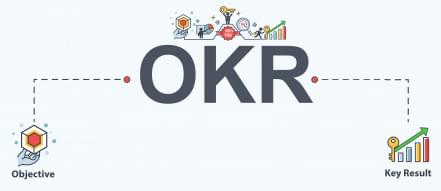
She even visited the Alibaba office in China and analysed Google’s usage of OKR on its staff. She realizes, this system is so widely used across big corporations and this may be her answer to increase the motivation of her people. From her attained knowledge, Nicole decided to renovate her offices and provide free lunch to her people, as well as giving them freebies she thinks they would appreciate. This is her first step to make them feel more motivated to work better and have a clear OKR in place.

By learning further, another system came to Nicole’s knowledge, i.e. Key Performance Indicators (KPI) and she was confused if this system was better than OKR. She got even more confused when she heard arguments that SMEs or start ups do not necessarily need KPI or OKR systems. She met a CFO and asked him about this matter. She learnt that selecting a motivational system in duplicating her people isn’t merely just picking one and then executing it. She needs to know her people better and also identify the business goals, THEN design the OKR with KPI!
To make your business successful, you need the right people that are capable and willing to work together towards achieving your business goal. You need their positive energy, their strong willpower to work not in their best interests – and such people should be duplicated. They give your business value, and you can even then put your trust in them in automating your business. Before duplicating them, you have to ensure that they know the direction your business is heading towards. To accomplish this, OKR could be used.
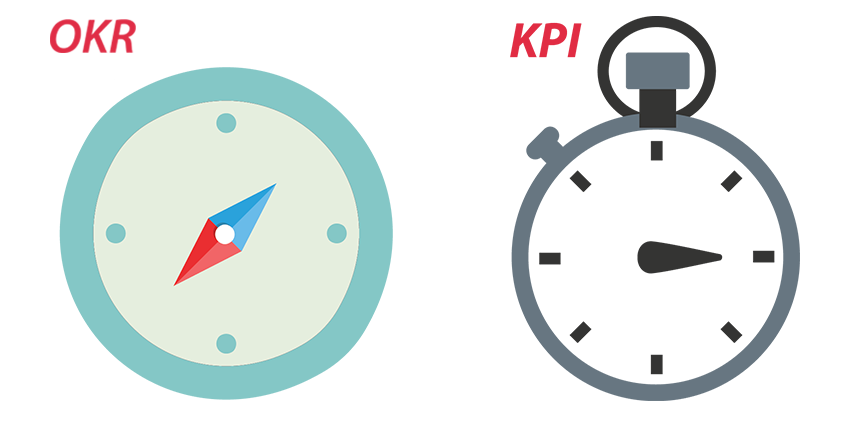
Just like a compass, OKR gives your people a direction they should follow. It helps them know better what they should do to successfully arrive at the destination, i.e. the ultimate goal of your business. To motivate them to move towards the goal, KPI could be used. Here, KPI functions as a stopwatch that determines the speed of how your people would work towards not only their goals, but also the business as a whole. In other words, KPI is a measurement that helps your business understand how well it is performing. Is it in line with its strategic goals and objectives? Is your business on the right track? It could be used to fit into your business’ Strategic Road Map (SRM) to have a clear view on how far or near you are from achieving your business goals. With KPI, your business’ performance could be significantly improved, as you will benefit from its usage from better decision making processes.
At a glance, OKR and KPI may sound similar. When you start studying them in depth, it will surprise you how their differences are so distinct from each other.
Table of differences between OKR and KPI

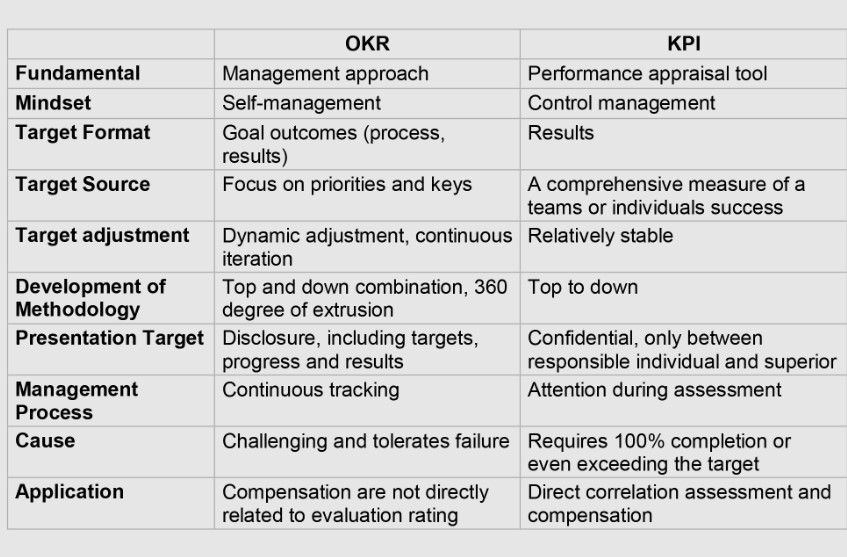
Since the differences between OKR and KPI are so significant, you could actually use both appraisal methods to maximise the outcome of your organisation. With OKR, you ensure your people have a goal specified and then you motivate them further with KPI. In this way, their extent of achieving their goal could be given a better sense of measurement and also to determine areas for improvement. You may also start identifying individuals you deem worth duplicating to make your business even stronger.
To duplicate PEOPLE, you are actually looking at the duplication of DMEA positions in SOS. Now, what is this all about? DMEA is simply the major positions in a business – Director, Manager, Executive, and Assistant; whereas SOS represents your three major business functions – Sales, Operations, and Support. You must clearly know which people are relevant to be duplicated into which business function, to make the particular function operate better.
As a boss an a Director, you shall look into seven key areas to determine which people should be duplicated based on its performance, as follows:
1. Work attitude
Willingness and capability are both very important attitudes that must be shown by your people towards their work. With good willingness and capabilities, you are one step closer towards achieving your business goals. These individuals should be duplicated into as many copies and possible atl levels. Therefore, duplicate all three, i.e. MEA.
2. Business-oriented activities
In a normal course of a business, many activities shall be held and you would require high involvement from your people to make it a successful one. Therefore, you should also duplicate MEA.
3. Job effectiveness
To measure how effective a job is carried out, you would depend on your subordinates. In every department, a manager would be assigned to overlook their people. How successful your job is depends on the capability and willingness of your executives and associates. Thus, effective E and A shall be duplicated.
4. Task preparation
This is also related to point #3. To get a job done effectively, your people would need to be well prepared in executing their tasks. How much knowledge do they have to get the task done? Were they willing to conduct their own research to enhance their task performance? E and A play an important role in this case, and therefore EA individuals with good task preparation must be duplicated as it shows high willingness.
5. Key result
Each individual or department is assigned with key results that shall be achieved towards arriving at the business goal. To obtain this, everyone must work together hand-in-hand so that the best key results should be achieved. When excellent key results could be achieved, the related MEA must be duplicated.
6. Management and supervision
Good management and supervision could actually motivate subordinates to work even better. An individual and responsible manager would be able to aid in more effective management and supervision, and therefore M shall be duplicated.
7. Coordination and guidance
To give a direction to your people, coordination and guidance plays a very essential role. Managers are also responsible for this. Managers with a high capability of giving coordination and guidance should be further duplicated into other departments, and therefore the people to be duplicated here is M.
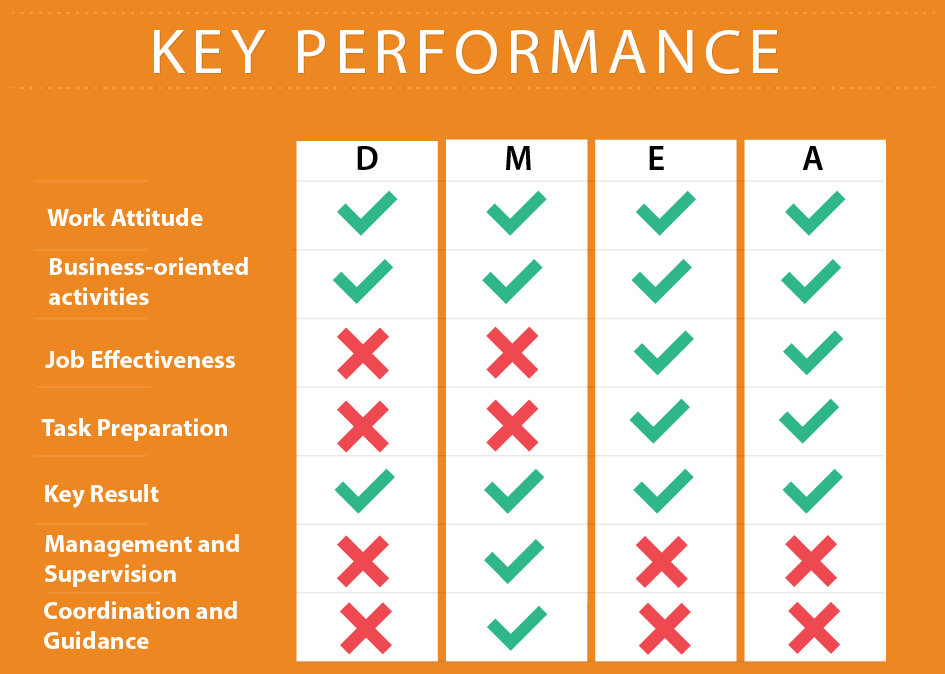
When you have identified who should be duplicated, you now want to start setting the OKR and KPI of each individual or department, as well as your whole business, so that you could then track their performance from time to time. Some examples of OKR and KPI you could use in your business are:
OKR
Sales : O – Achieve record revenues while increasing profitability
KR – Hit quarterly revenue of over RM50,000.
Operations : O – Improve documentation management.
KR – Full cloud-based documentation usage by end of the year.
Support : O – Improve customer satisfaction.
KR – Get 50 responses monthly from customers’ satisfaction survey.
KPI
Sales : Number of new contracts signed per period.
Operations : Average time to issue documents to stakeholders.
Support : Customer satisfaction score.
Now you know you could use OKR and KPI to motivate your people and then duplicate their good traits – great! But how do you make this two times better? For me, I would recommend having a clear Strategic Road Map (SRM) in place first, and this will be elaborated further in Blog 7.3. You MUST know your goal first in order to give you a clearer picture on what your OKR and KPI should be. Some people will not be motivated by OKR because it is not directly linked to evaluation of their compensation plan. For this, I make some adjustments, such as providing extra Allowance for those who successfully completed OKR by 80%. This acts like a Compass leading people to the right direction.
What if your business consists of too many people, making it not feasible to practice this whole OKR and KPI system? Well, this sounds more like an excuse not to practice this system. The approach is simple, you assign your staff into levels, from Level 1 and a maximum up until Level 3, and you then meet them on a weekly basis to discuss all their progress. You should have an optimum of three KPI and OKR for each individual or department or team, and this can be a combination of 1 OKR and 2 KPI, or 2 KPI and 1 OKR – know what’s the best based on your business’ current position. No one practice would fit all businesses the same way! If you need further guidance on how to write an OKR, you could always refer back to previous blog Your Key to Business Success. An OKR Elicitation would be your bible to writing a well-defined OKR. If you want to learn more on how to take your business to next level, my book NEXT LEVEL BOSS – THE SECRETS reveal business secrets so that you can straight up model, simulate and duplicate to Read, Recruit and Lead people, Search, Spend and Multiply money.
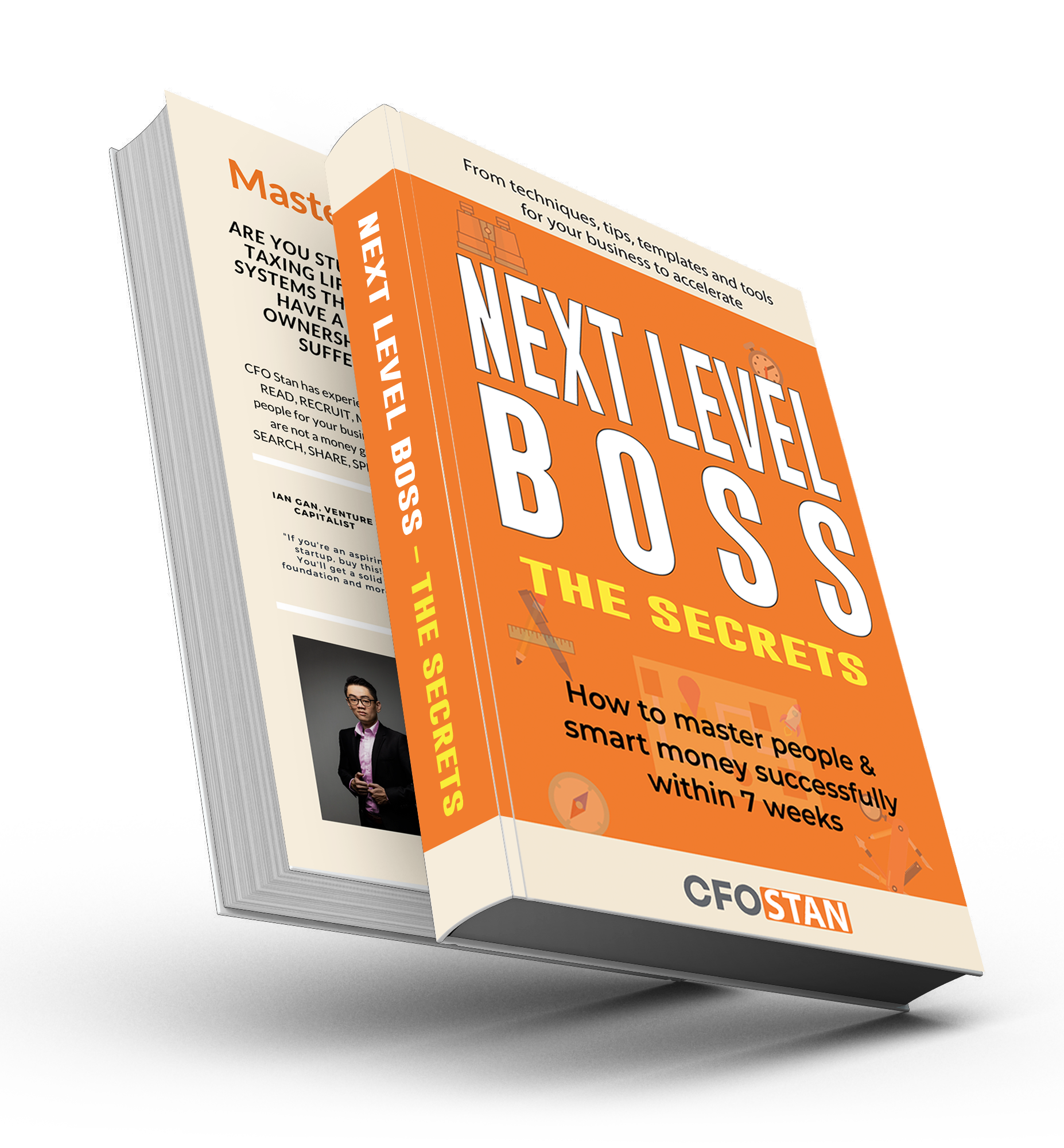
Nicole was taught the same thing elaborated above by the CFO. With her knowledge on motivating her people through an extensive OKR and KPI system, Nicole saw the best traits in some of her people and managed to duplicate these people. As a result, her sales multiplied by tenfold after the implementation of OKR with KPI. Nicole is currently in the process of planning for IPO, that shall be achieved in five years’ time. To have a clearer picture, Nicole not only uses OKR and KPI, but also SRM and Funding Road Map (FRM).
